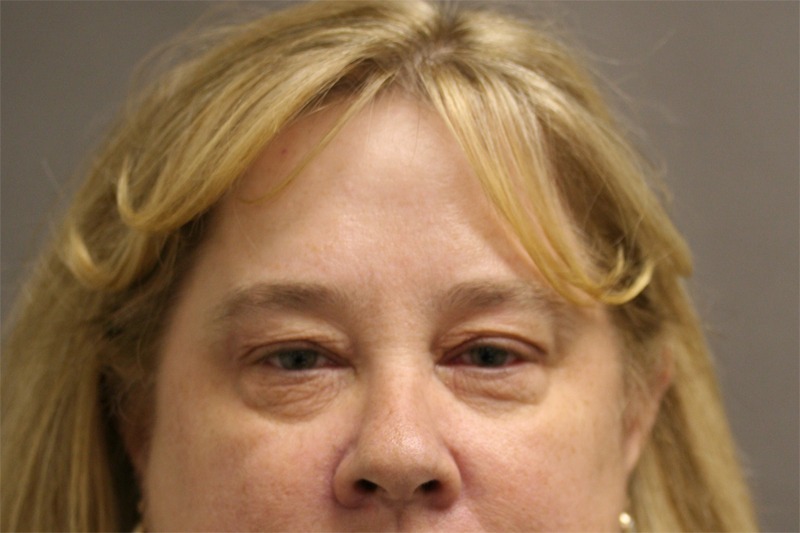Midface Lift in Arcadia, CA
Conveniently located to serve Arcadia, CA
We all know that each individual ages differently, and yet most of us never consider the fact that different portions of our faces age at different rates, too. By examining various parts of the face and how they age, one can then address facial rejuvenation appropriately. In general, Dr. Chow discusses three major parts of the face as part of the aging process, plus the eyes, which frequently are a cosmetic issue for many of his patients.
These sections are:
- The forehead and brow on top
- The eyes (with the upper and lower eyelids)
- The midface, which includes the cheeks and has the mouth as its lower border
- The lower face, which includes the jawline and even the neck
The Midface Lift addresses the central part of the face. Often, patients are concerned about the bags and deep hollows under their eyes, and require more than just lower eyelid surgery (lower blepharoplasty). They may notice sagging of the cheek pads, producing a drooped, tired appearance to the midface. This is a common feature of aging, and yet many of the traditional techniques for facelift do not adequately address this problem.
Many surgeons will state that they address the midface, either through a traditional facelift incision (as part of the deep plane facelift, for example) or by using simple sutures to hold up the mid-facial skin. Dr. Chow uses specific endoscopic techniques to elevate all of the tissues (rather than just pulling on the skin) to provide a more natural, longer-lasting change.
Therefore, at the Chow Center, an innovative technique called the endoscopic midface lift is employed to help rejuvenate the central portion of the face and return it to its original appearance. If you want to learn more about facelifts, you can click the link to return to the main facelift page.
Preparation
Restoring the central face through the endoscopic, minimally invasive Midface Lift is a remarkable way to regain that youthful look to the eyes and cheeks with long lasting results. Unlike many advertised midface lifts that use nothing more than a “threadlift” technique to raise the skin only, Dr. Chow uses an innovative, longer lasting technique that lifts all of the soft tissues of the midface to rejuvenate the face. Because it raises the cheeks, this procedure must be done in concert with a lower eyelid surgery (lower blepharoplasty) and is also performed with an endoscopic brow (forehead) lift without any additional incisions.
Before the Procedure
The first step towards addressing your cosmetic concerns is to have an in-depth consultation with Dr. Jen Chow at the Chow Center. This will provide you with the opportunity to review your aesthetic goals with the facial plastic surgeon himself. Additional before and after photos will be available to you, and you will receive an information packet that will describe much of what you discuss in greater detail. This will allow you to review the information at your leisure after your consultation.
Once you have scheduled your Midface Lift, you will still have the opportunity to ask Dr. Chow any and all questions you may have regarding the procedure during your pre-operative visit. You will receive prescriptions for any medication you may need after surgery (such as antibiotics and medications to relieve discomfort). You will also be provided written instructions regarding what you should do before and after surgery. These will be reviewed with you so that you are completely comfortable about the procedure. Foods, supplements, and even vitamins that may thin the blood should be avoided. Aspirin, ibuprofen, Aleve, and other over the counter non-steroidal inflammatory medications (NSAIDs) should be avoided as well.
If you color your hair, you may choose to do so at least a week prior to your surgery. You should avoid hair dyes for several weeks after the procedure, depending on your type of surgery, in order to maximize safe healing afterwards.
The Procedure
Your Midface Lift will be performed by Dr. Chow at a fully accredited surgical facility. Because you will need either “twilight” or general anesthesia, you will not be able to eat or drink after midnight on the day of the surgery.
You will be given specific instructions leading up to your procedure. Some helpful tips for the day of surgery include: avoiding clothing that must be pulled over the head (zippered or buttoned shirts are recommended), leaving jewelry and valuables at home, and keeping the face and hair free of makeup and hair sprays or gels, respectively.
Once you have arrived at the facility, Dr. Chow will mark your face for the procedure and use hair bands (when appropriate) to preserve the hair and keep it away from the facelift field. He does not need to shave any hair in order to provide excellent results.
The incision lines for a Midface lift are hidden in the hair. Two incisions measuring approximately 3-4cm in length (approximately 1-1.75”) will be made, one on each side, above and anterior to the ear within the hair bearing portion of the scalp. Two, occasionally three, small incisions just large enough to allow for a telescopic camera to be placed will also be made higher up in the scalp. This allows the smallest and fewest number of incisions to be made for a surgery in which most of the incisions are hidden within the hair.
Because the Midface lift brings sagging cheeks and the Midface to a higher position on the face, it must be performed with a lower eyelid surgery to remove excess skin below the eyes, as well as a brow lift so that excess skin does not collect at the temples once the cheeks have been raised. These procedures are commonly performed together.


* Individual results may vary.
Recovery Info
After the Procedure
Your face and scalp will be wrapped overnight after the procedure. Swelling of the midface is expected after this surgery, and is the primary cause for discomfort. Your dressings will be removed the day after surgery and replaced with a much lighter dressing to be worn for five days. Stitches are usually removed between 5-7 days after surgery, except those around the eyes from lower eyelid surgery (blepharoplasty), which are removed three days after surgery.
You may resume light activities (such as office work) a week after surgery. There may be residual swelling and some sutures that still need to be removed at that time. However, most such sutures are difficult to see, as they are well hidden. If you have bruising, it may be covered with makeup or clothing (turtlenecks, scarves) at this time.
You should avoid strenuous activity, such as heavy lifting, running, etc., in the first week to two weeks after your Midface Lift. Moderate physical activities may be performed after two weeks, and nearly all usual daily activities can be resumed after three weeks.
FAQ
-
What is a Midface Lift?
The Midface Lift addresses the middle third of the face, between the eyes and the upper lip. It is performed when a more subtle, but still very significant, improvement is needed. Although the goal of the Midface Lift, like the traditional lower facelift, is to rejuvenate the face, the techniques are very different. Both techniques are used to address drooping or sagging skin, wrinkles, and other signs of premature aging, but the Midface Lift is performed with minimal incisions that are hidden from view within the hair. In addition, many patients who qualify for the Midface Lift do not require significant skin redraping, and therefore have less swelling immediately after the procedure.
-
What is the difference between a Facelift and a Midface Lift?
The traditional facelift focuses on the lower face and neck, while the Midface Lift, as its name suggests, focuses on the central third of the face, or the cheeks between the eyes and the upper lip. The changes that occur with aging in this area include deepening of the fold between the cheek and upper lip (also called the naso-labial fold). Although part of the reason that this fold deepens can be attributed to age-related volume loss, sagging skin and underlying tissues also contribute to the tired, sad look associated with these lines. While the traditional facelift will improve jowling along the jaw-line, and some techniques, such as the deep-plane facelift, also pull laterally (towards the ears) along the cheeks and the midface, only the Midface Lift provides the ideal vector (direction) of lifting, moving sagging tissues in the midface back to their original positions. Because both the facelift and Midface Lift have different goals and address different areas of the face, they are often performed together to provide more complete facial rejuvenation. The best way to discover which procedure is best for your unique face is to schedule a consultation at the Chow Center.
-
Who is a candidate for the Midface Lift?
Ideal candidates for the Midface Lift have deep hollows beneath their eyes (and eye bags), with deep smile lines and a falling brow. In general, the midface area (the cheeks between the eyes and upper lip) begins to droop in the mid-thirties. This change becomes more prominent during the decade between 40 and 50 years of age. In order to counter the effects of this aging, the Midface lift restores the padding of the bony rim beneath the lower eyelid, also allowing for more skin removal (the wrinkled, lined skin of the lower eyelid) without eyelid changes. It can soften the smile lines by raising the cheeks to their more youthful position, and is performed together with an endoscopic brow lift to rejuvenate the forehead and brow at the same time. An in-depth consultation with Dr. Chow reviewing your aesthetic concerns will help you decide if this cosmetic procedure is right for you.
-
How do I know if I need a Midface Lift or a Facelift?
A large number of factors, including your age, your genetic disposition, the amount of sun exposure and sun protection you have had, your skin type, and your history of tobacco use can all affect facial aging. When aging has occurred in the lower face and neck, the traditional facelift or mini-facelift are useful for rejuvenation. The Midface Lift is used for rejuvenation in the middle third of the face, between the eyes and the upper lip. The best way to know for certain what is best for you is to consult with your facial plastic surgeon. Dr. Chow uses an endoscopic, minimal-incision approach to his Midface Lift. Don’t be afraid to ask questions during your consultation!
-
Where is the Midface Lift procedure performed?
Dr. Chow performs the Midface Lift at a fully licensed and accredited outpatient surgery center. You will be able to go home the same day as your surgery.
-
Do I need anesthesia for the Midface Lift?
Yes, the Midface Lift is generally performed with local anesthesia and sedation or with general anesthesia.
-
Where are the incisions for a Midface Lift?
This is an excellent question. Because this surgery is performed endoscopically, incisions generally measure about one and a half inches in length. These incisions hidden in the hair (your hair will not be cut or shaved) above your ears, with two far smaller incisions (again, hidden in the hair) higher up in the hair-bearing scalp. As he does with all of his procedures and surgeries, Dr. Jen Chow will use the smallest incisions possible for your Midface Lift.
-
How soon can I exercise after the Midface Lift?
Light exercise, such as strolling down the block or at the mall, may be resumed a week after surgery. More strenuous exercise should not be started for two to three weeks after your Midface Lift.

